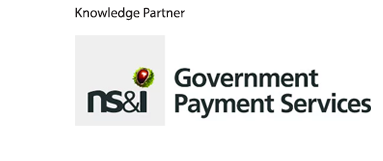Three reasons to adopt ready-made AI models for government

The demand for public sector efficiency is higher than ever. Civil servants are working with tighter budgets, smaller teams and rising expectations. Despite their efforts, critics and stakeholders believe they could still do more. Here, Lee Ann Dietz, director of global public sector marketing at SAS, sets out how ready-made AI models tailor-made for government can help
AI is a promising solution that is helping achieve the long-standing goal of government efficiency. Although the adoption of AI in the public sector has generally lagged behind the private sector, momentum is gaining as government leaders see the agility that AI offers to improve services, outcomes and programme efficiencies.
Adopting AI applications isn’t always easy. So, what if there was a way to alleviate some of the burdens civil servants experience in their day-to-day work, through AI that is accessible, scalable and quickly integrated into operations? Enter ready-made AI models tailor-made for the government.
Ease your AI adoption
Ready-made models are designed to perform a discreet task and can be integrated into existing data and AI environments, such as a proprietary platform like SAS Viya or one developed in open source.
Accelerate the ROI on your AI investment
A hybrid strategy to incorporate ready-made AI models can increase productivity. This approach is gaining popularity in both the public and private sectors – particularly for those who may not yet see the full ROI of their AI. Ready-made AI models applied to key processes within an agency’s workflow can accelerate the return on investment and see tangible results – increasing the chance for AI use to be considered for other projects.
Leap-frog the time and effort of ground-up AI modelling
Building models from scratch takes time, it’s iterative work and requires marrying the expertise and insights of domain experts with data scientists skilled in AI. Training models is no small task given the importance of recognising bias and ensuring systems are transparent and accurate. And they must be continuously monitored too. Sounds daunting – and it is likely why organisations struggle with building models. However, ready-made AI models can facilitate deployment with low overhead.
Ready-made AI models, ready now
Built for when, where and how governments need them, SAS ready-made AI models are portable, industry-focused and designed to tackle common challenges with precision and efficiency. Here are four examples:
1. Free data from paper when possible
While digital transformation is key to improving government efficiency, it can’t entirely replace paper documentation. Given that government agencies must reach all constituents, including those who don’t have easy access to computers and online resources, being able to capture data from ongoing analogue sources would help you remain committed to “bigger picture” digital transformation goals.
The Document Analysis model was developed with that idea in mind, by combining traditional analytic techniques with AI in order to automate “reading” and processing of scanned documents. This method extracts structured and valuable information from scanned document images and converts them into machine-recognisable text code for analytics, reporting and automated decision-making.
2. Finding the right person every time
Personally identifiable information of citizens and stakeholders (commonly referred to as “PII”) are stored in various government systems. Entity resolution is needed to reconcile these systems, ensuring accurate record matching to maintain analysis integrity and promote trust.
The AI-driven Entity Resolution model streamlines data integration by identifying and merging records that refer to the same entity, even when unique identifiers are missing. It helps combine tables without key fields and consolidates duplicate records within a single dataset, ensuring individuals assigned multiple IDs are correctly recognised as one.
3. Prioritising audit candidates to uncover sales tax discrepancies
The Sales Tax Compliance model uses peer group analysis, trend analysis, and various models to identify businesses likely to have tax compliance issues. It is configurable and offers multiple plug-in points for custom programs to manage data processing, analysis, alert scoring and alert management. The dynamic feedback loop in the scoring process can identify emerging trends and prioritise successful analysis results to refine future audit lead scores.
4. Ensuring accuracy in food assistance payments
The Payment Integrity model for food assistance replicates the manual work agencies have traditionally done to identify payment errors but enhances accuracy and efficiency through automation and advanced analytics.
It starts by aggregating existing cases to form peer groups within the population without relying on third-party data. Peer groups are then used to identify outliers in reported income and expenses. Cases with significant deviations from their peer groups are assigned priority scores.
Commitment to innovation
Delivering industry models as packaged offerings is one outcome of the commitment SAS made of US$1bn to AI-powered industry solutions. The substantial investment in AI builds on SAS’ decades-long focus on concentrating resources on developing bespoke solutions to address operating challenges in industry-optimized ways for banking, government, health care and other industries across the globe.
SAS is evolving its portfolio to meet wider user needs and capture market share with innovative new offerings. An area that is ripe for SAS is productising models built on SAS’ core assets, talent and IP from its wealth of experience working with customers to solve industry problems. – Chandana Gopal, research director, future of intelligence, IDC
SAS helps the public sector deliver services more efficiently. By preparing for uncertainty and responding quickly to challenges, SAS supports over 1,600 departments, ministries, and agencies in 130 countries with mission-critical activities.
Now, with ready-made AI models built on decades of expertise in applying scalable and trustworthy AI models, governments can operationalise trustworthy AI technology and quickly realise tangible benefits.
Author
Lee Ann Dietz
Lee Ann Dietz is the director of global public sector marketing at SAS, supporting government ministries, departments, and agencies around the world, helping them solve entrenched problems and improve productivity by applying data and AI. She is passionate about applying analytics to support public sector agencies to deliver outcomes that enable the safety and well-being of individuals, families, and communities. Lee Ann has an undergraduate degree in Economics from Stanford University and an MBA from the University of Virginia’s Darden Graduate School of Business.

















